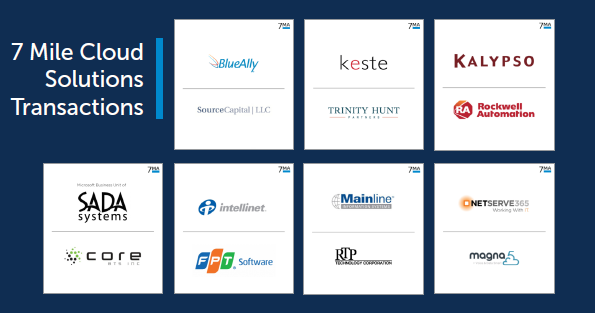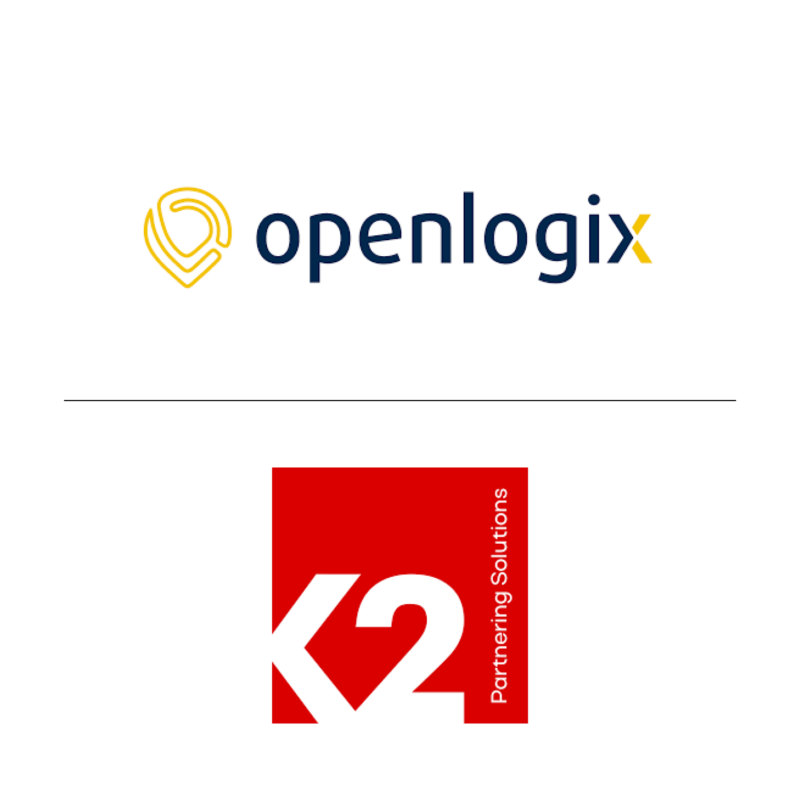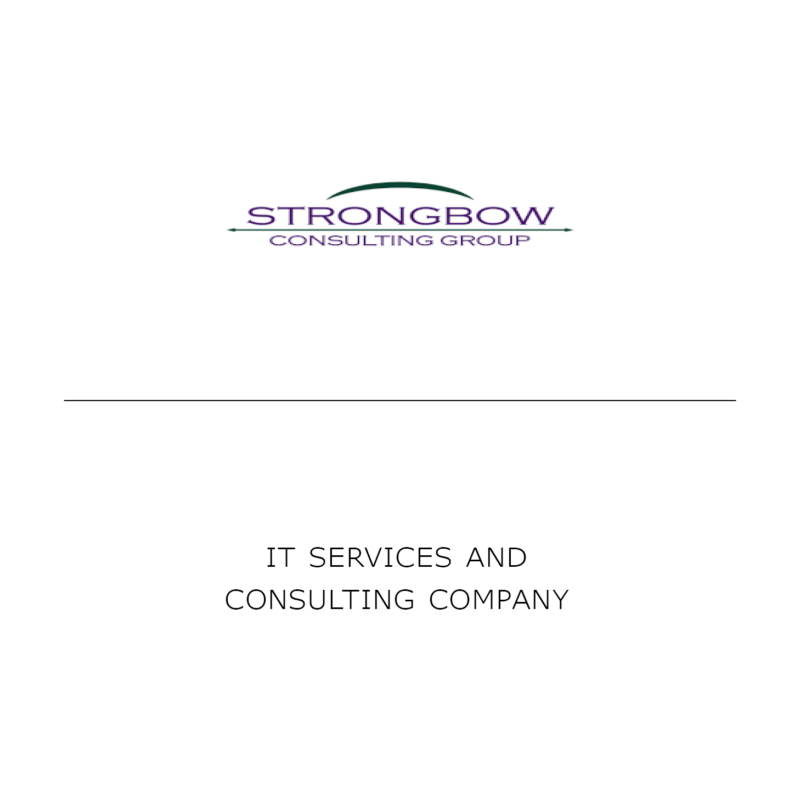October 2020
Advancements of Cloud Technology
Cloud computing has not only revolutionized how enterprises view and plan for their information technology utilization and budgeting needs, but the cloud is also becoming increasingly important in our everyday lives through interactions with technology. With a projected market size of ~$285b by 2024, innovative cloud technology will continue to drive the advancement and adoption of agile IT computing and delivery for its end users.
This report overviews the history of the cloud, explores the impact of the current economic environment on the industry, and highlights our outlook on the future of M&A within the space. View full report.
Overview
When Amazon Web Services (“AWS”) released Amazon Elastic Compute Cloud (“Amazon EC2”), the industry’s premier, cloud-computing platform back in 2006, nobody would have predicted the Cloud Infrastructure Services industry would become one of the biggest technological innovations in the IT Services industry with a projected market size of $284b by 2024.(1)
The ‘cloud’ can be best described as the white knight to IT-related inefficiencies such as misutilization of resources, unknown capacity planning and productivity, latency regarding application deployment, and stagnant capabilities when it comes to optimizing and integrating an enterprise’s IT stack. Cloud architecture outsources IT functions to service providers who can manage the task more efficiently, therefore enabling the enterprise to focus on its core functions and competencies to better drive its revenue and business model forward.
Cloud technology offers on-demand, real-time capabilities ranging from computing, big data and analytics, machine learning, cybersecurity, backup and disaster recovery to storage, application development, and DevOps functions and processes. This combination of offerings drives agile, elastic, cost-efficient IT-delivery to its end-user.
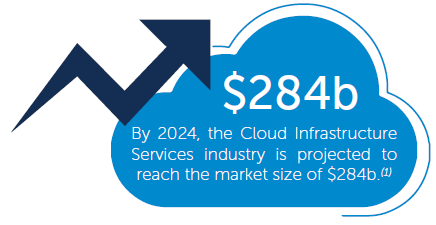
History
The initial concept of a shared pool of resources and capabilities, which essentially became the foundation of cloud, came into fruition during the 1960’s when time-sharing became popularized by a concept called ‘Remote Job Entry’ (“RJE”). “RJE’s were mainly associated with large vendors, such as IBM and DEC, where data center models consisting of end-users submitting job orders to operators became increasingly popular.
Virtualization, multiple applications on different operating systems running simultaneously on a single, replicated server, gained global knowledgeable in the 2000’s.
This abstraction can be segmented a level higher in an IT stack by the rise of containers in the mid-2010s, which continues to advance the cloud-stack evolution. Virtualization allows multiple applications to be deployed on a single server through virtual machines, while containers enable multiple applications to run on a single operating system and focuses on the back-end
configuration of application deployment regarding an enterprise’s workflow engine and processing capabilities. Containers allow for faster go-to-market deployment time with higher levels of application scalability and portability.
Cloud computing is a web-based computing service that delivers computing capabilities including, but not limited to: networking, software, data and analytics, and business intelligence. This service offers a coherent, flexible IT-delivery in a cost-effective manner to enterprises globally. Simply put, the cloud can be viewed as an ecosystem with shared resources to optimize an enterprise’s IT functions and capabilities through real-time delivery.
Virtualization
The main enabling technology of cloud computing is derived from virtualization, with the ability to “virtualize,” or replicate, underlying infrastructure and hardware resources to run multiple applications and operating systems simultaneously, increasing application deployment execution to a matter of minutes. Virtualization results in enterprises decreasing up-front capital expenditures and costly maintenance of maintaining and provisioning data centers and on-site servers, and
instead outsourcing those capabilities to external, 3rd-party service providers that can host, compute, and deliver real-time computing power. Enterprises saved on average 50% of IT-related overhead as a result of the reduction in private cloud delivery costs when leveraging virtualized servers(1). The virtualization layer, as depicted in the following infographic, enables cloud adoption by abstracting applications and operating systems under single services, so that virtual machines (“VM’s”) can compute and deliver under one, outsourced, infrastructure model. This model results in multiple applications being run through the integrated stack, providing a collaborative, shared environment.
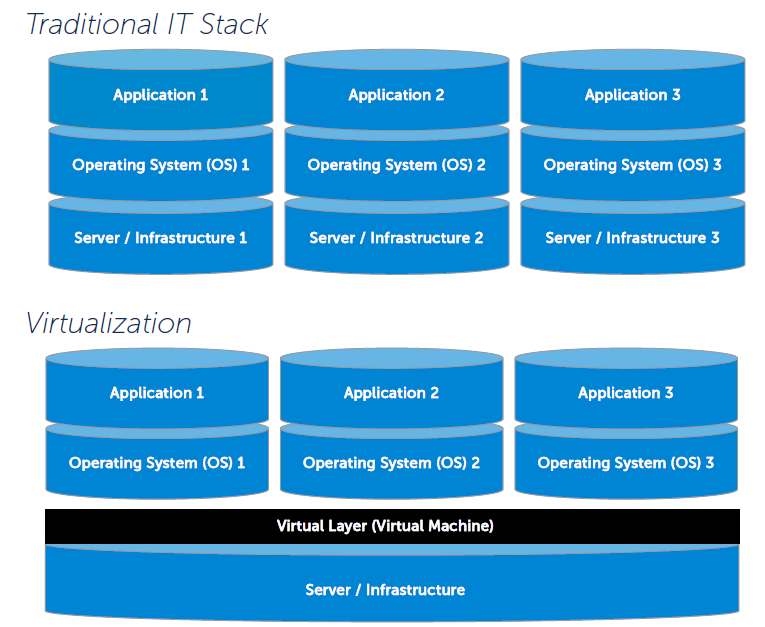
Virtualization provides the backbone to cloud computing. Due to the scalability and elasticity of the cloud, it ultimately encompasses every IT function a company can outsource and allows them to consume and pay as they go.
Containerization
The next advancement of cloud adoption, which became popularized in the 2010s, comes from containers, or OS-level virtualization. Where VMs allow applications to run on a single, underlying server, containers allow applications to run on a single operating system. reflecting a level of abstraction above virtualization. A 2019 Portworx survey of 500 enterprises reported that 87% of the sample size surveyed reflected usage of container technologies within their current IT infrastructure (2).
Containers focus primarily on the back-end of application deployment, interacting with the web or payment server, workflow engine, and databases. Cloud service providers that offer computing, deployment, and monitoring capabilities regarding containers reflect a faster go-to-market deployment, higher level of resource flexibility and scalability when it comes to consumption, capability of operating on multi-cloud environments, and increased efficiency on application development for the end-to-end product life cycle. The container industry has been implemented on open-source software, with Docker and Kubernetes emerging as the leading projects driving the growth within this industry, providing orchestration software that helps enterprises scale thousands of containers up and down on a daily basis via a cost-efficient manner to the end-user.
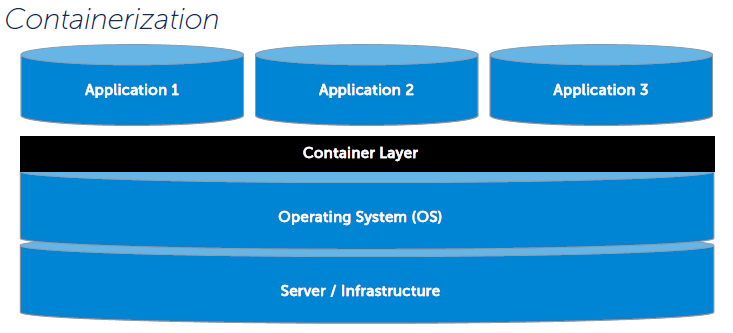
Deployment Model
When contemplating the various deployment models of cloud delivery, one can think of the
following:
Public Cloud – Public Cloud service providers make their services and resources available via a web-based delivery model. This delivery approach is open to the public and uses hosting and computing power that is driven by the providers’ data centers, which are strategically positioned to serve their end-users. Spending on Public Cloud services topped ~$107b for the 2019 FY(3) with AWS leading at a 32% market share. Google Cloud Partners (“GCP”) posted the highest annual growth at 88%, driven largely by their ability to differentiate themselves through next-generation innovation, including AI, machine learning, and analytics (4).
Private Cloud – Private Cloud deployment can only be accessed through private networks, such as an intranet. Private cloud deployment offerings operate solely for a single enterprise, whether managed in-house or externally, and organizations often allocate a significant amount of capex and resources to maintain and uphold the infrastructure. Large public cloud platforms, such as AWS, allow public users who are willing to pay a premium access to a private configuration through the use of a Virtual Private Network (“VPN”).
Hybrid Cloud – Hybrid Cloud combines both public and private cloud environments where enterprises can benefit from a mixture of the cost-efficiency of a public cloud and the security and control that comes from a private cloud solution.
Service Model
The Cloud Technology ecosystem provides a variety of services that are intercorrelated and allow for cohesive integration with an enterprise’s IT functions:
Infrastructure as a Service (IaaS) provides end-users the capability to provision network connectivity, storage, and processing in real-time. By consuming this service, enterprises are responsible for the application layer only. The consumer has no control over the underlying infrastructure, but has oversight over the operating system and applications that are deployed with services being billed as they are consumed.
Platform as a Service (PaaS) gives application developers a computing platform which includes an operating system plus commonly used application servers like payment, web application, workflow engine, and database. PaaS provides environments for quickly developing, testing, and deploying an application with a managed, back-end IT stack.
Software as a Service (SaaS) offers proprietary software to be consumed and gives end-users administrative capabilities regarding the management of the software itself. Consumers of SaaS products do not have to worry about the underlying infrastructure or operating system of which the software is sitting on as it will be managed by the cloud services provider.
Future of Cloud: Serverless Technology
Serverless technology is the next wave of architecture that will further standardize, augment, and integrate IT-delivery and consumption within the cloud industry with a forecasted market size of ~$16b in 2025.(5) Within a traditional IT stack, applications are limited to their respective operating systems and underlying servers. This inflexible infrastructure is responsible for deploying the application to end users, but can be stagnant, and financially burdensome.
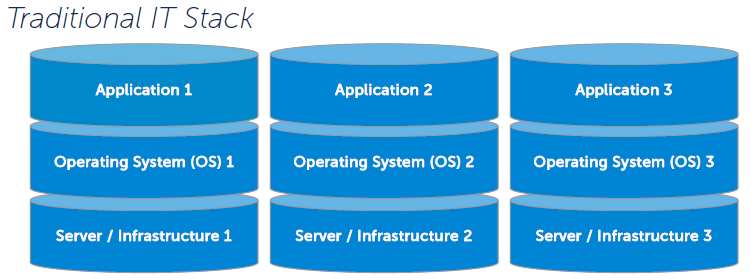
Serverless architecture is the popular computing model for application design and deployment; this model allows developers to automate back-end computing to cloud services providers and focus resources on front-end development. Compared to IaaS or PaaS, serverless computing gives enterprises with strong front-end teams the flexibility to focus completely on its user-facing processes without the need to provision back-end resources such as a VM or a container to drive faster go-to-market application deployments within a span of milliseconds.
Serverless computing is pushing the heavily-innovative and theoretical ‘NoOps’ environment, where IT business units don’t have to focus on back-end computing, but rather utilize their capabilities to its fullest capacity deploying applications. A RightScale report stated that serverless computing is the fastest growing extended cloud services for the second year in a row, with 36% global adoption in 2019(6).
When it comes to screening cloud providers with serverless deployment capabilities, having a provider that can manage multiple cloud environments should yield a premium compared to other single-deployment platform providers given the ever-changing adoption of the technology.
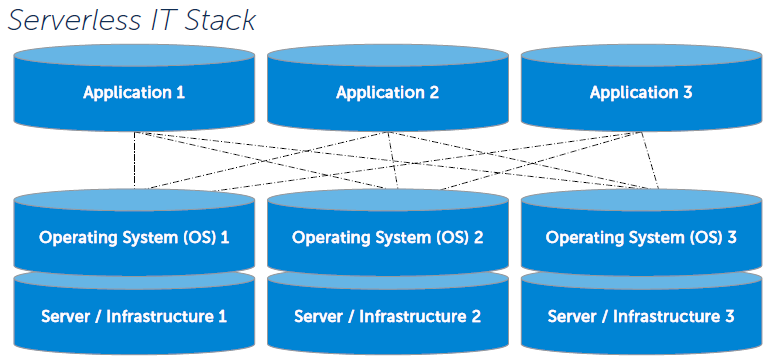
COVID-19 Landscape
The Cloud ecosystem is performing considerably well amidst the current COVID macro environment with global cloud-services spending hitting a record high $35b in Q2 2020, a 11% increase from the previous quarter and a 30% increase from the same period, year-over-year (7).
At the end of 2019, public cloud infrastructure services spending finally outpaced private, in house data center hardware and software spending for the first time in history, solidifying that traditional IT services and functions have migrated over to the cloud.
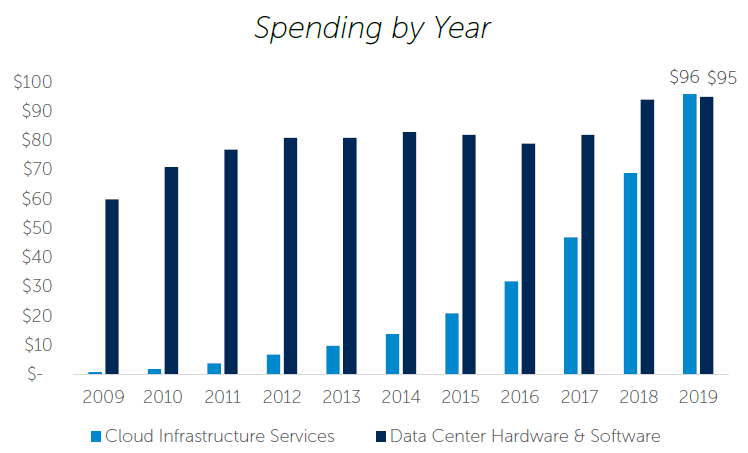
Another unprecedented IT-services milestone was set in the COVID environment in Q2 2020 when next-generation IT-capex outpaced the traditional industrial real-asset capex to take the majority of total capex spending for the first time in U.S. history (8).
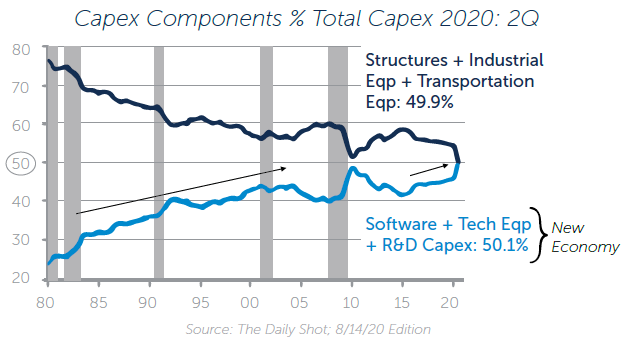
M&A Landscape
The M&A landscape has been considerably busy with both strategic and financial sponsors pursuing inorganic growth opportunities to take part in this explosive new segment. Large enterprises and system integrators looking to build out their cloud computing capabilities are seeking to acquire small service providers that have expertise in multiple public cloud platforms (AWS, Google Cloud, and Microsoft Azure), which enables the traditional technology powerhouses to augment their functionalities by expanding their service offering and providing a more intuitive, cohesive IT stack to take advantage of this next-generation technology.
7MA has advised on a number of M&A deals regarding cloud solutions providers, most recently acting as the exclusive buyside advisor to Gryphon Investors and their portfolio company, 3Cloud, on the acquisition of Pragmatic Works.
Closing Summary
So what’s next for the cloud industry? In an ever-changing industry, the next digital breakthrough can completely shift the focus and direction of the ecosystem. As the cloud becomes more pervasive and evident in our everyday lives, we will continue to experience the innovative shift of information engagement, delivery, and consumption. 7MA predicts that cloud computing will grow in importance as a core requirement of any enterprise IT solution provider and will be a highly sought after capability by investors and acquirors for the long term.
Resources
- (1) 2019 VMWare Annual Report
- (2) 2019 Container Adoption Survey, Portworx & Aqua Security
- (3) Canalys Worldwide Cloud Infrastructure Q4 2019 and Full Year 2019
- (4) 2019 Gartner Magic Quadrant for Cloud Infrastructure as a Service, Worldwide
- (5) Grand View Research – Global Serverless Architecture Market Size
- (6) RightScale 2019 State of the Cloud Report
- (7) Cloud Spending Hits Record Amid Economic Fallout From Covid-19
- (8) The Daily Shot – August 14, 2020

